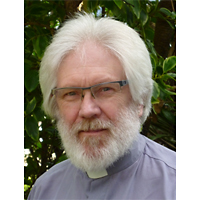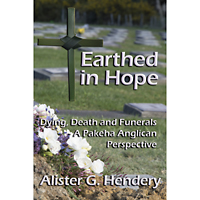Alister features in this excellent Anglican Taonga online article at http://www.anglicantaonga.org.nz/News/Tikanga-Pakeha/Earthed-in-Hope
“Over the last 35 years Alister Hendery has taken more than 1500 funerals – both as a priest and a celebrant. He’s also worked as a counsellor, specialising in grief and loss.
And he’s drawn from that lifetime of ministry to the dead, the dying and the bereaved to write: Earthed in Hope – Dying, Death and Funerals, a Pakeha Anglican perspective , which was launched in Wellington last week.
Alister says he began working on the book because of the “acute lack” of any serious writing about funeral ministry – and he was dismayed by the degree to which Kiwis marginalise death.
“We live in a death-denying society,” he says. “And the church has been seduced by that denial.
“I also wrote it because I had clergy who were saying to me: ‘Can you please just give us a resource on how to do funerals? Funerals 101, if you like.’”
“So, I wanted to write something that would encourage fresh thinking, not only about how we minister in the face of death, but how we regard our own mortality.”
Alister Hendery says he hopes readers of Earthed in Hope will draw confidence from it to:
- “Enter conversations with people about the Christian hope in the face of death, and to be able to articulate what they believe about post-mortem life.
- “Use our funeral liturgies with greater creativity and care… Our funerals aren’t ‘just for the bereaved’ – they’re far more than the popular notion of a ‘celebration of a life.’ They focus on the dead as well as the living. They also look forward with a hope rooted in the love of God from which nothing can separate us.
- “Understand the diversity of beliefs that people hold and the questions people are asking;
- “Find a new confidence to engage with people as they ask questions about some of the toughest questions we mortals ever face.
- “Respect the uniqueness of each person’s experience of grief and to explore ways of caring for one another at times of bereavement, loss and change.
Archbishop Philip Richardson has written the foreword to Earthed in Hope , and he gives Hendery’s work high praise. He writes: “I am going to place a copy of this book in the hands of every person I ordain from now on.” ”


